Moving in mono: Cruising to music by any means necessary

I had hoped to write about the sale of my truck this week, but events have not yet played out. So instead I’m going to give you my odd history with automotive sound systems. Note that in 2017 I wrote a five-part series for Hagerty on the history of obsolete automotive audio (here are links to part 1, 2, 3, 4, and 5), but this will be far more personal.
When I was growing up on Long Island in the 1960s, my father had a monophonic hi-fi sound system in the living room with a Heathkit AA13 amp that he’d built (he was an electrical engineer), a Garrard turntable, a Lafayette tuner, and a single AR-4 speaker. While he was alive, it was used mainly to play Broadway soundtracks. The standard ’60s stuff … you know—Fiddler on the Roof, Man of La Mancha, The Fantasticks, Camelot. When I was nine years old, I remember asking him what the bass and the treble knobs did. He explained and twisted them for me to demonstrate, but I couldn’t hear their effect. Of course, the soundtrack of Camelot didn’t exactly have the snap or the frequency range of, say, Paul McCartney’s bass and George Harrison’s sitar on Sgt. Pepper’s Lonely Hearts Club Band, and I have no recollection of rock and roll like that finding its way via the tuner into the house to educate me. Likewise, if there was a radio in my parents’ 1963 Ford Fairlane, I have no recollection of it pumping scratchy music into the Long Island air. To be clear, it wasn’t as if my father clamped down on music in any way. The lack of happenin’ tunes in the Siegel ancestral household to grab me and make me pay attention to audio was just a generational thing.
After my father passed, my mother bought ’69 Plymouth Satellite. My earliest recollection of listening to music in a car is hearing Cousin Brucie on WABC spin songs on the AM radio in the Satellite. Perhaps it was the fact that the Satellite was the first family car with air conditioning, allowing windows-up driving that didn’t drown out the tunes. Whatever the reason, I have sharp clear memories of my sister and I fighting for control of the radio dial and hearing songs as disparate as Neil Young’s “Only Love Can Break Your Heart,” Norman Greenbaum’s “Spirit in the Sky,” and Desmond Dekker’s “Israelites.” Toto, I don’t think we’re in Camelot anymore.
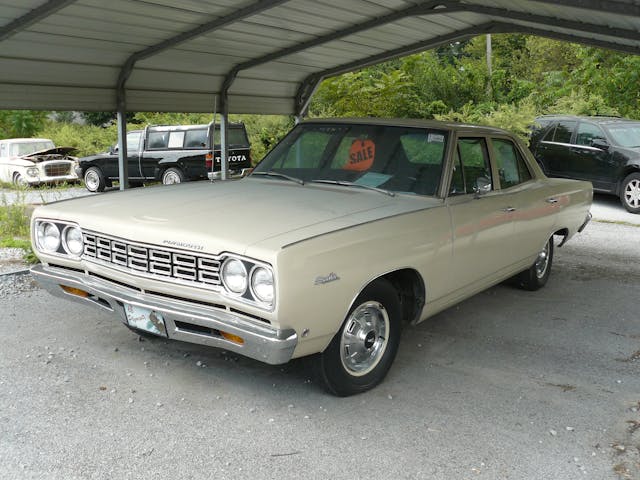
After we moved up to Amherst, Massachusetts, I briefly worked in a stereo store when I was in the 8th grade. In addition to being the place I first saw a Lotus Europa, it’s where I developed an understanding of audio. If someone was interested in a pair of big expensive speakers, the store’s owner would crank Emerson Lake and Palmer’s “Lucky Man.” The combination of the jangly twin acoustic guitars, the crisp snare crack, the woofy electric bass, and the thunderous 36.71 Hz low D synthesizer note at the end of the song literally moved product.
A few years later, when I was in high school, I learned to drive in the Satellite, but when the car’s repair bills mounted, and when the Arab oil embargo hit in 1974 causing gas prices to spike, my mother went shopping for a small car. I, who had been bitten by the BMW 2002 bug as a 13-year-old when a 2002-owning college student lived with us for the summer, begged her to buy one, but they were too pricey, so she bought a brand-new ’74 Fiat 128 two-door instead. It was a stripped car with no radio and no A/C, but it had a four-speed standard transmission. My mother taught me how to drive a stick, and as soon as I got my license, I had fairly free run of the Fiat. In return, I pretended it was a 2002 and beat on it mercilessly.
Having a driver’s license and a car with four-on-the-floor was awesome, but one thing was missing—tunes. I begged my mother to let me install a sound system in the Fiat. I think she gave me a $20 budget. Presaging the Hack Mechanic that I would become, I bought a used monophonic FM radio, hung it from the underside of the dash with furniture brackets and drywall screws, and laid the no-longer-used AR-4 speaker from my father’s sound system on the back seat. The car had no tach, but there was so much ignition interference on the radio that you could estimate engine rpm from the whine. I didn’t care. I was driving a stick with tunes. I was in absolute heaven.

I bought the 1970 Triumph GT6+ the summer of ’76 after I graduated high school. The previous owner had stuffed both an 8-track player and a cassette player into that tiny interior (the cassette in the console, the 8-track hanging down from the left under-dash). When I bought it, the car came with two 8-track tapes. In the glove box was Eagles Greatest Hits, which I think was a legislatively mandated requirement for any car in 1976, along with ridiculously large bumpers and crushing levels of hastily-integrated emission controls. But the album that was already queued up in the 8-track player was Gary Wright’s Dream Weaver. When I drove the car home after the purchase, the song “Love is Alive” began cranking over the car’s decent aftermarket sound system. I’m not sure that any other piece of music roots me so completely to an automotive-specific time and place. When Gary Wright passed away in early September, I went back and listened to “Love is Alive,” and confirmed that a) it’s still a killer song, and b) it still puts my 18-year-old butt right back into the GT6’s seat. The summer of 1978, a few months before I sold the Triumph, The Cars’ debut album broke on the radio, and like Gary Wright, I can’t hear “Just What I Needed” (or anything else off that album) without imagining myself in the car.

Fast-forward to winter 1981. When my then-girlfriend Maire Anne and I were preparing to move down to Austin, Texas (her job running an animal lab at Harvard had been transferred there), outfitting her 1971 VW Bus with tunes for the four-day drive was a necessity. My ex-boss—the guy who’d had the 2002 when I was in junior high school—gifted us a Fosgate Punch 100-watt power amp he’d pulled out of a car before selling it. I, who had no job waiting for me in Austin, spent most of my remaining cash on a Craig “Road-Rated” cassette deck with a pair of RCA output jacks to feed the Punch power amp. For speakers, I continued the fine tradition I’d begun with placing my father’s AR-4 on the Fiat’s back seat and used my two massive ESS AMT9s home stereo speakers. I installed them in the back of the bus (hey, we had to move them anyway, right?) and put a plywood board and a mattress on top of them so one of us could sleep while the other one was driving. When I showed this system to friends, the uniform response was “You’ve got to be kidding me,” only they didn’t say “kidding.” You could’ve faced the speakers backward and used the music as propulsion.
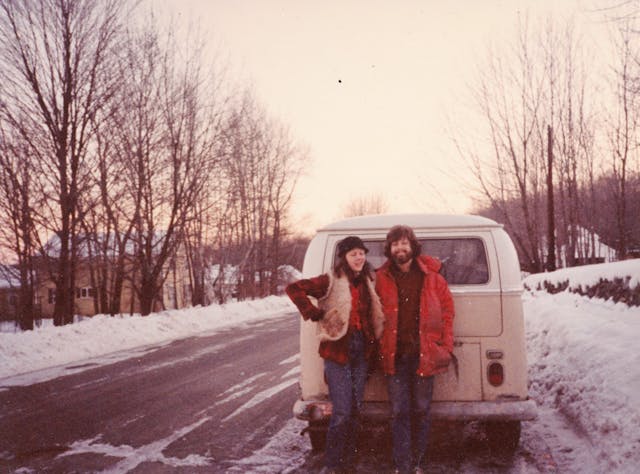
Once we were settled in Austin and I bought my first project BMW 2002, I mounted in it the Craig tape deck, the Fosgate power amp, and a pair of ADS 200s (speakers in little Kleenex-box-sized metal die-cast boxes) that I’d bought at a pawn shop. When I first drove the revived car with its freshly-rebuilt transmission, brand-new Pirelli P3 tires, and killer stereo through the Texas hill country—winding it up, shifting the no-longer-crunching transmission through the gears, cornering on the new rubber, and listening to The Psychedelic Furs’ “The Ghost in You” jumping off a fresh Maxell UDXLII tape—I was the happiest guy on the planet. I honestly don’t think I’ve ever felt that my needs in life were so completely satisfied.
The ADS 200s had two versions—standard home bookshelf speakers and versions that had threaded holes for brackets meant to be mounted on a car’s back deck. These were the bookshelf versions, so there was no obvious mounting method. I found that they wedged nicely on the back deck under the rear windshield and didn’t move around while driving, but they were also highly visible and thus likely to be stolen, so I took a couple of ¼-inch guitar-style plugs and jacks, installed a jack panel on the back deck, wired it to the power amp, and made the speakers un-pluggable so they could be removed and put in the trunk. It was my first of several steps toward non-permanent stereo installations. Of course, as BMW informally stood for “Break My Window” because of both stereo theft as well as theft of the entire car, that’s the way the industry was moving anyway.

When we moved back to Boston, one of the 2002 parts cars I bought had a high-dollar sound system with an Alpine deck, an ADS power amp, and a pair of ADS 300i flush-mount speakers. This system found its way into several cars, including my ’73 E9 3.0CSi, with the Alpine in a slide-mount-removable “Benzi Box.” Although I didn’t mutilate the door panels by cutting holes for speakers, I did cut rectangular holes in the back deck for the 300i speakers and cut a second set of holes in the rear seat’s kick panel for a pair of subwoofers, decisions that are now commonly regarded as an act of cruelty against a vintage car.
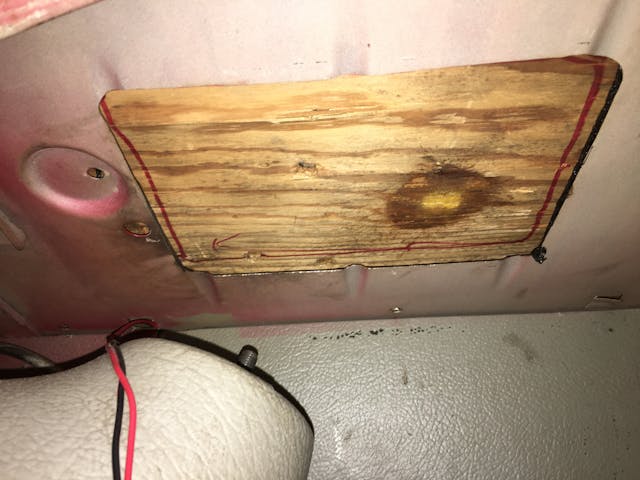
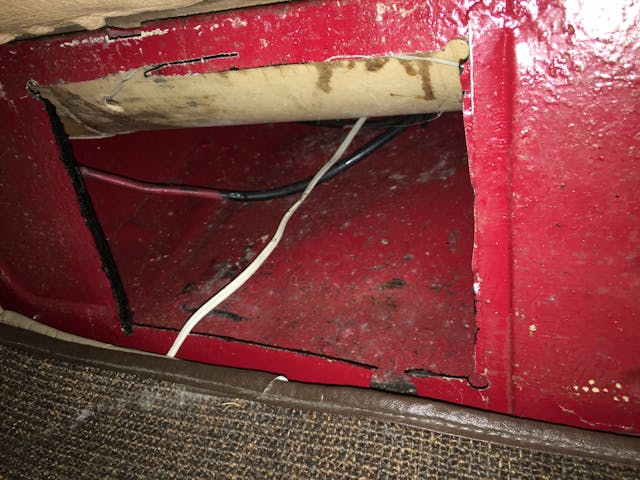
As part of replacing the console when I retrofitted air conditioning into the E9 in 2000, I swapped out the Alpine cassette deck for a Pioneer CD player. Although I specifically tried to find a deck with a very simple design (that is, no Star Trek The Motion Picture graphics), it still clearly looked like it teleported in from the wrong millennium. Surprisingly but perhaps mercifully, I can’t find a single photo of the system in the car, a cosmic indictment of the fact that it wasn’t supposed to be there. I didn’t really use it that much, as there was something about the placement of the ADS 300i speakers in the back deck that set up an unpleasant resonance. It probably could’ve been tuned out with proper equalization, but I wound up removing the 300is and installing them into another car.

As the number of cars multiplied, I moved away from direct installations in favor of portable systems that I could throw in a car before a road trip. Initially I used a Cambridge Soundworks PC Works system with two small satellite speakers and a small, powered subwoofer. As the name implies, it was meant for use with a desktop computer, but its advantages were that a) you could plug in an aux cable from your iPod (and later your phone), b) it sounded surprisingly good, c) the powered subwoofer had a 12-volt jack that you could power directly off the car’s cigarette lighter socket, and d) for the $30 a used system cost you, if it got stolen from the car, who cared?

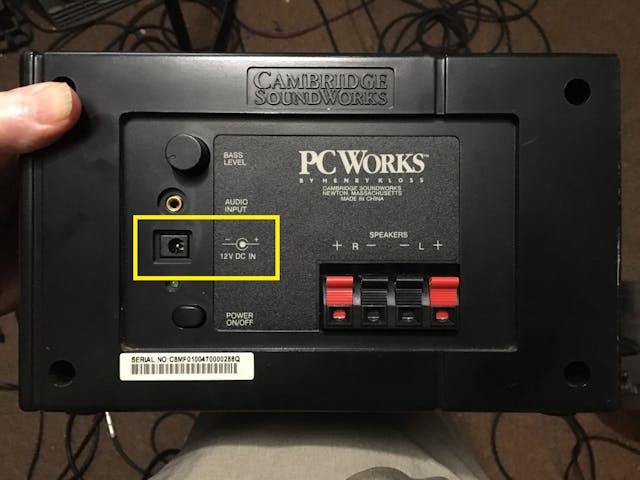
Once I went down the Cambridge Soundworks rabbit hole, I found the then-way-cool but now-laughably-clunky Cambridge Soundworks Model 12 that had a small, old-school stereo amplifier and two removable satellite speakers inside a little road case that also held an integral subwoofer. Like the PC Works system, the Model 12 runs off a cigarette lighter, but it sounds much better. When I found one of these locally for $150, I jumped at it. I used it for a few road trips, jamming the case with the sub behind the driver’s seat, sticking the satellites to the back deck with Velcro and balancing the little amp on the transmission hump. It sounded great, but it wasn’t really a very good solution, as it was a bit too valuable for the “go ahead and steal me” approach of its PC Works brother, and the pack-up and re-deploy time to pull it in and out of the car was non-trivial.
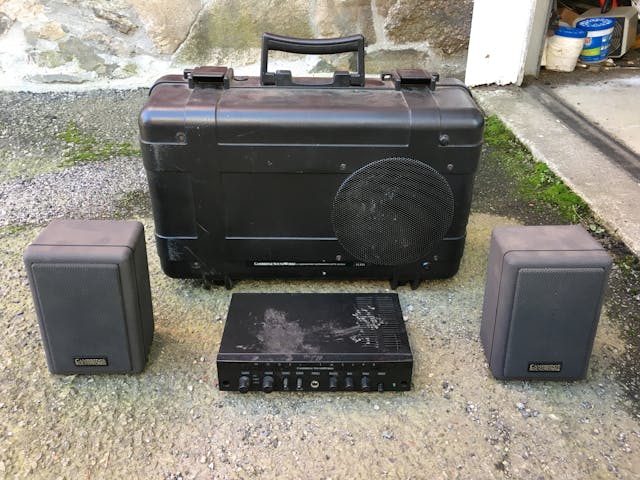
Because the Pioneer CD player in the E9 was too old to have an aux port, for a while when I was annually road-tripping the E9 coupe to The Vintage in Asheville, North Carolina, I resurrected the ADS Power Plate amp that’s still mounted in the trunk, fed it music directly from my phone via an aux-to-RCA adapter, and tried the old Fiat / VW Bus / BMW 2002 approach of pumping the sound into stereo speakers like the ADS 200s. However, over the years I found the high-volume levels needed to overcome the wind noise in the vintage cars fatiguing and began the road-trip in thought-provoking silence instead. The exception is my 2003 E39 530i— compared with the vintage cars, it’s very quiet, and its bone-stock sound system is astonishingly good.
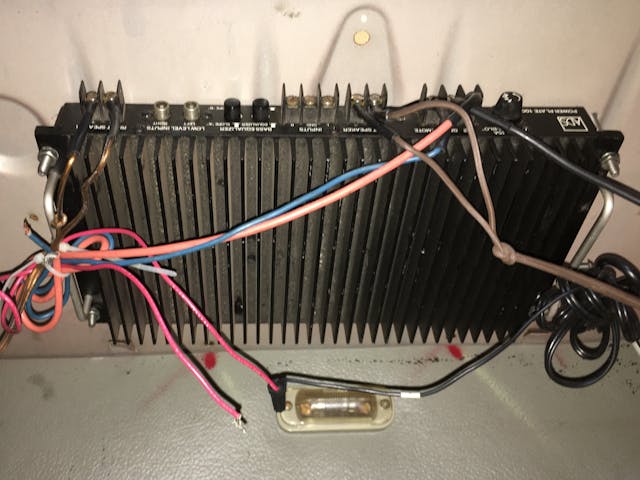
Of course, with vintage cars, what the market values is the original in-dash radio. I’m responsible for the violence committed against my E9 in the name of tunes, but in my defense, two of my BMW 2002s have never had their interiors cut up for a sound system and are still wearing their original functional Blaupunkt mono FM units, and those things will only change over my dead body. I’ll sometimes twiddle the tuner knob just for the novelty of it if I’m at a traffic light running an errand on a Sunday morning. I’m well aware that I could send these units out and have them retrofitted for Bluetooth, but I don’t see the point. It’s doubtful it would make me listen to them more. I have a period-correct mono Blaupunkt for the E9 too. I’ll install it the next time I need to pull apart the console.
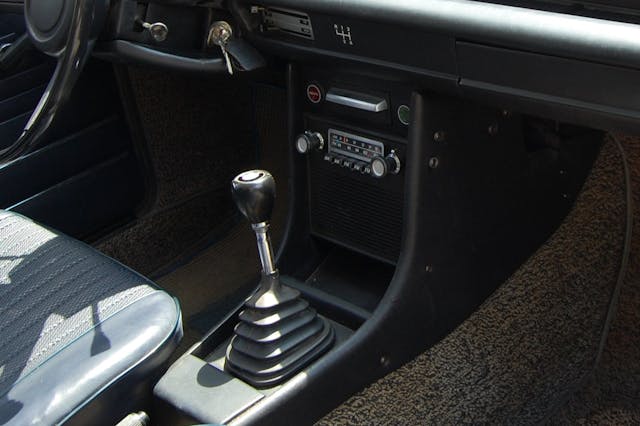
I don’t know if it’s the fact that, at age 65, I’m now officially a get-off-my-lawn senior citizen, but my days of in-car audio seem to have naturally ended. These days, when a car with a big woofing sound system rolls by pumping out oodles of Lucky Man-ending bass, I have a reaction where I feel physically ill.
The more I think about it, the more I realize that if, during one of the short periods I have the monophonic Blaupunkt turned on in one of the 2002s, something from Camelot came on, I’d probably enjoy it. My father would be so pleased.
***
Rob’s latest book, The Best Of The Hack Mechanic™: 35 years of hacks, kluges, and assorted automotive mayhem is available on Amazon here. His other seven books are available here on Amazon, or you can order personally-inscribed copies from Rob’s website, www.robsiegel.com.
Check out the Hagerty Media homepage so you don’t miss a single story, or better yet, bookmark it. To get our best stories delivered right to your inbox, subscribe to our newsletters.


Did a lot of radio-swapping, speaker-installation, and wiring back in my late-teens thru early-40’s; don’t think I have done hardly any of that since. Way too hard to stand on one’s head under the dash, or squeeze into the trunk, at 68!
My older brother had a VW bus when we were growing up. I distinctly remember scraping frost off the inside of the windshield while he drove on a mega sub freezing night. My toes still feel cold from that night. And yes that was after the engine warmed up
I blew out the speakers in my mom’s ’99 Pathfinder when I was 16, and replaced them with some bright red sony Xplod 6.5s (as was the style at the time). My first car, an ’88 Jeep Cherokee, I installed a full system and two 12″ subwoofers in the trunk before I’d even gotten it plated for the road.
Fastforward and every vehicle I’ve ever owned had the system upgraded, and almost all had a subwoofer added (even my ’18 F150 got a slim all-in-one 10″ sub behind the back seats).
But I’ve been away from the big systems for a hot minute. I’m hoping to change that with my ’86 Benz and go for a classically overpowered system. Seeing as it’s a weekend cruiser, I wanna cruise around in my vintage S class banging beats. It’s not like anyone drives an S class to hear the exhaust note (of my inline 6 diesel) anyways.
I’m not sure what age I’ll give up on big bass and sound, but at 35 it’s not waning yet. My wife is also addicted to the sub 50hz range at 37, so at least I’m in good company.
Wait’ll you’re twice your present age – your most-often used word will be: “huh?” Don’t ask me how I know, ’cause you’re living the answer right now!
Thanks for the great article, Rob! Some of your comments really struck home with me; such as certain songs transporting me back to specific moments in time. My first love in Junior High (who quickly moved on after one summer with me) is instantly in my brain when I hear The Monkees’ song “Not Your Step’n Stone”. Cruising our small town ‘strip’ in my first car, a 1960 Ford Starliner, with The Doors’ “Light My Fire” (long version) blasting from my factory AM Radio and the used 12″ TV Speaker located in the Package Shelf, was the next thing to nirvana at the time.
Being budget-constrained back then, it was several years before any audio upgrades were undertaken, but my first was a portable Sears Cassette Player that I could install/remove built into my home-made Center Console, playing through a stock Dash Speaker and the 12″ unit in the rear. It was over a decade later that that very option became a popular factory-installed sound system in new cars… there went my millions!
In recent years I bought a factory-appearing replacement for my 1965 Falcon Sedan. It got treated to a the AM-FM unit and a 10 CD Changer stealthily-mounted in the Trunk. Those 4 Speakers were often cranking out a mixture of classic rock, oldies, and even some classical music thrown in. After a while, like you, I enjoyed a quiet drive without any music playing, allowing me plenty of time for contemplation. I guess the constant bombardment of sound these days from almost everywhere we find ourselves, finally pushed me too far and I longed for the sweet sound of silence while driving. Funny how we can come full circle in our life, harkening back to the simpler times when the world didn’t seem so crazy… except maybe for the involvement in southeast Asia. Thanks again for the calming article, and bringing me back to that time.
I too fancied myself as an “audiophile” back in the day, starting with the Pioneer TP-900 8-track I installed in Dad’s ‘71 Torino (inherited from grandpa w/18k on the clock). Quickly graduated to a KP-500 cassette unit which was transferred to my first daily driver – ‘66 Chevy 1/2-ton that needed 3 qts of oil added each way to work. That same KP-500 made it’s way into a ‘79 Chevy short van with a separate amp/equalizer feeding huge house speakers that had long enough leads to put them on the roof for proper partying. Traded that van for a ‘76 Coupe Deville and installed a Kenwood in-dash along with afore-mentioned amp/equalizer and aftermarket speakers. After that it was respectable cars with stock audio until I bought a ‘08 Ranger wrecked off the InterWebs, put a new front clip, radiator, etc on it and installed a Kenwood BT-enabled receiver, Infinity replacement speakers in the stock locations and a Bazooka powered sub behind the passenger seat. I still rock it pretty good when I drive that truck. Great article, brings back memories of my miss-spent youth.
Fun read, I could relate in a lot of ways. Currently sitting in the “regret” phase of multiple classic audio retrofits (anyone have experience with those Miata in-headrest speakers?!) this article has me thinking about how much damage I might have done.
To tide me over, I use the present-day equivalent of those SoundWorks kits: the Sony XB40 portable speaker. Probably anything in the XB lineup (or the similar units from JBL or others that you’d find in Costco lately) will drive enough sound to more than overpower the wind noise in a convertible at 120kph, fastest I ever need to go.
Thinking back over years of road trips, commutes, and Sunday drives, I’m just glad the music plays on.
I worked at Cambridge Soundworks for a year or so, and have an old Model Eleven suitcase system, very similar to the Model 12 mentioned here. For any folks who have one, the satellite woofers are likely crapola now, due to failed foam surrounds. They probably would not meet Mr. Kloss’s specs, but after much searching, I found compatible 3″ drivers that fit and sound fine- posting here so maybe folks who need new drivers for their Model 11 or Model 12 will find this post.
https://www.parts-express.com/FaitalPRO-3FE22-3-Neodymium-Professional-Woofer-4-Ohm-294-1100?quantity=1